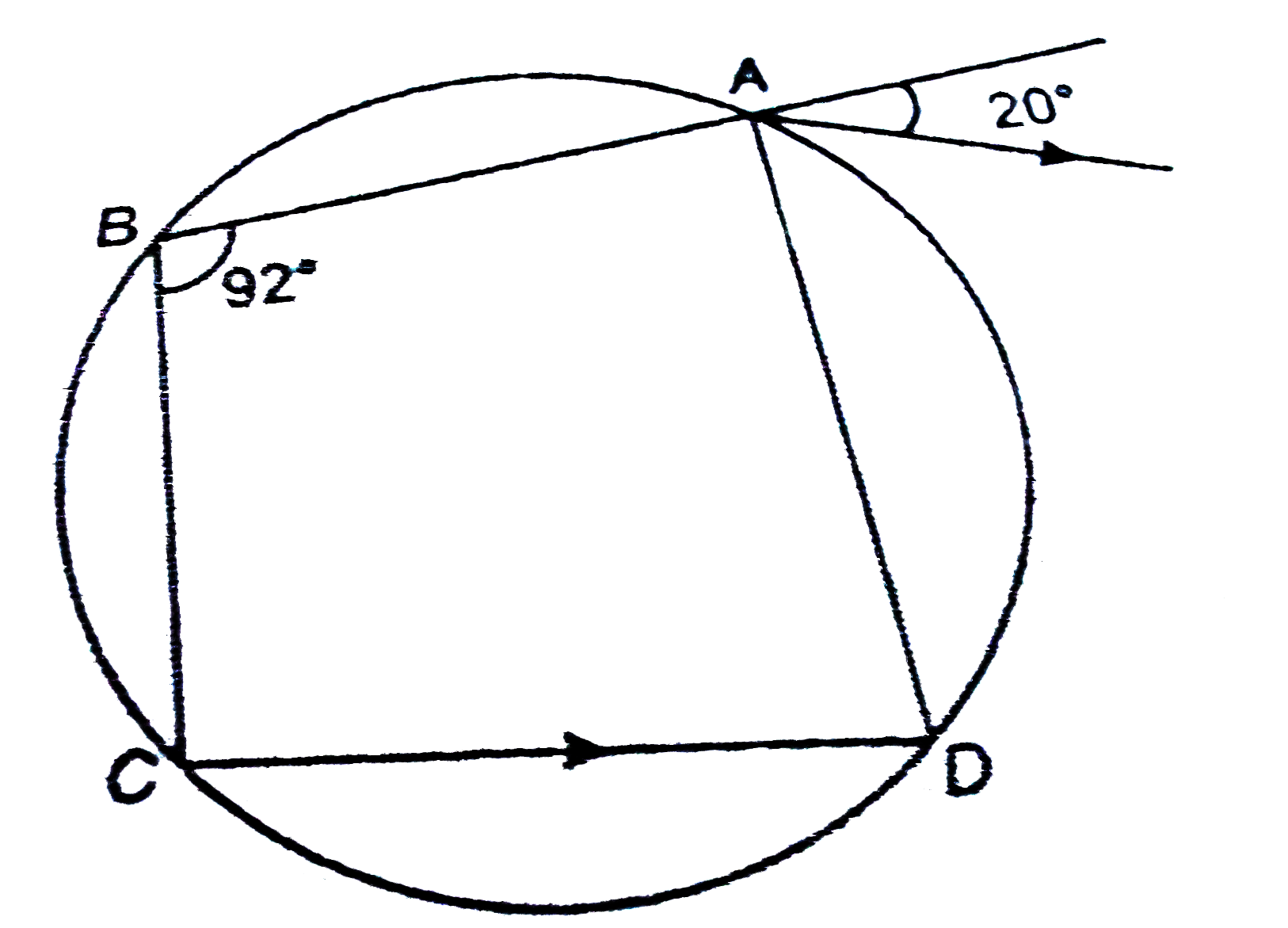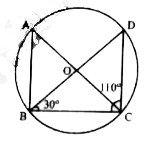In the given figure ABCD is a cyclic quadrilateral in which AC and BD are its diagonals. If ∠DBC=55∘and∠BAC=45∘, find ∠BCD.

Step by step video & image solution for In the given figure ABCD is a cyclic quadrilateral in which AC and BD are its diagonals. If angle DBC = 55 ^(@) and angle BAC = 45 ^(@), find angle BCD. by Maths experts to help you in doubts & scoring excellent marks in Class 9 exams.
Updated on:21/07/2023Topper's Solved these Questions
Similar Questions
Knowledge Check
ABCD is a cyclic quadrilateral. Diagonals AC and BD meets at P. If ∠APB=110∘ and ∠CBD=30∘, then ∠ADB measures
A55∘B30∘C70∘D80∘ABCD is a cyclic quadrilateral whose diagonals intersect at P. If AB=BC,∠DBC=70∘and∠BAC=30∘, then the measure of ∠PCD is:
Aa) 50∘Bb) 35∘Cc) 55∘Dd) 30∘
In the given figure ABCD is a quadrilateral ∠ADB=60∘,∠BAC=70∘,∠DBC=30∘,and∠ACB=60∘. Find ∠DACA30∘B40∘C50∘D60∘
In the given figure ABCD is a cyclic quadrilateral in which AE is drawn parallel to CD and BA is produced. If ∠ABC=92∘ and ∠FAE=20∘, Find ∠BCD.

View SolutionIn this figure ∠DBC=30∘and∠BCD=110∘. Find ∠BAC

View SolutionIn fig., ABCD is a cyclic quadrilatreral. If ∠BAC=50∘ and ∠DBC=60∘, then find ∠BCD.

View SolutionIn the given figure ADEC is a cyclic quadrilateral, CE and AD are extended to meet at B. ∠CAD=60∘ and ∠CBA=30∘.BD=6cmandCE=5√3cm, What is the ratio of AC:AD ?

View SolutionIn ΔABC,AC=BC and ∠BAC=70∘. Find ∠BCA
View Solution
